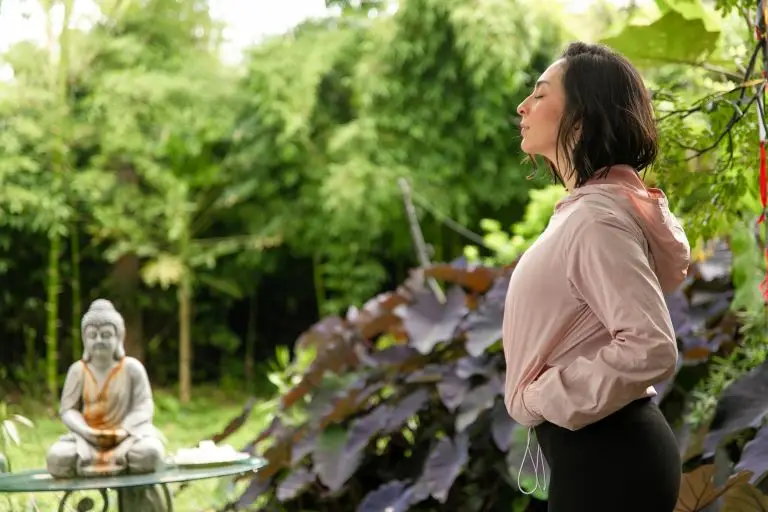The Role of Breath Ratios in Advanced Breathwork: How to Find Your Optimal Rhythm
Discover how breath ratios can unlock deeper states of calm, focus, and energy. Learn how to find your optimal rhythm with advanced breathwork techniques.
If you’ve dipped your toe into the world of breathwork, you’ve probably come across guided sessions that tell you when to inhale, when to hold, and when to exhale. At first, it might seem arbitrary—but there’s real science and ancient wisdom behind those patterns. Welcome to the world of breath ratios, a key component of advanced breathwork that can help you unlock deeper mental, emotional, and physical balance.
Whether you’re looking to boost focus, reduce anxiety, or tap into peak performance, learning to fine-tune your breath ratio could be the missing link.
What Are Breath Ratios?
At its simplest, a breath ratio is the timing relationship between four phases of the breath:
Inhale (Puraka)
Hold after inhale (Antar Kumbhaka)
Exhale (Rechaka)
Hold after exhale (Bahya Kumbhaka)
A common breath ratio might look like 4:4:4:4—four seconds each for inhale, hold, exhale, and hold. But more advanced practices often work with variations like 1:1:2 (inhale 4, exhale 8) or 1:4:2 (inhale 4, hold 16, exhale 8). The different patterns produce different effects on the nervous system and your overall mental state.
Why Breath Ratios Matter
Your breath acts like a remote control for your nervous system. Specific breath ratios can stimulate either the sympathetic nervous system (fight or flight) or the parasympathetic nervous system (rest and digest). Here’s how it breaks down:
Longer inhales tend to energise and stimulate.
Longer exhales promote calm and relaxation.
Breath holds can increase CO₂ tolerance, enhance focus, and create a meditative stillness.
By consciously adjusting these phases, you’re not just breathing—you’re sending direct signals to your brain and body.
Ancient Roots, Modern Science
Breath ratios are not a new discovery. Yogic texts like the Hatha Yoga Pradipika and Patanjali’s Yoga Sutras reference controlled breathing as a way to still the mind and prepare for deeper meditation. In the yogic practice of pranayama, breath control is seen as a doorway to mastering prana—life energy.
Modern science now backs this up. Studies show that regulated breathing can lower cortisol (the stress hormone), improve heart rate variability (a marker of resilience), and enhance focus. Specific ratios, like 1:2 inhale-to-exhale, have been shown to activate the vagus nerve and promote parasympathetic (restful) states.
Finding Your Optimal Rhythm
There’s no one-size-fits-all approach to breath ratios. What works beautifully for one person may feel uncomfortable or even triggering for another. The key is to experiment gradually and listen to your body.
Here are a few things to consider:
1. Start With Awareness
Before trying advanced ratios, simply observe your natural breathing. What’s your current rhythm? Is your inhale longer than your exhale—or vice versa? Do you pause between breaths?
Spend a few days just noticing without changing anything. This builds a foundation of breath awareness that’s crucial for going deeper.
2. Experiment With Simple Ratios
Try a 1:1 ratio to begin. For example, inhale for 4 seconds, exhale for 4 seconds. Do this for 3 to 5 minutes and notice how you feel.
Once that feels comfortable, you can shift to 1:2 (inhale 4, exhale 8) to promote calm, or 2:1 (inhale 6, exhale 3) to feel more alert and energised.
3. Add Breath Holds Gradually
Breath holds can be powerful—but also intense. A good starting point is a 4:4:4:0 rhythm: inhale for 4, hold for 4, exhale for 4, no hold after exhale. Over time, you might build up to more advanced patterns like 4:16:8:0—but only once your body feels ready.
Remember, longer isn’t always better. If you feel dizzy, anxious, or short of breath, ease off and return to a gentler pattern.
4. Pay Attention to Your Goals
Different breath ratios serve different purposes. Here’s a quick cheat sheet:
| Goal | Suggested Ratio |
|---|---|
| Relaxation / Sleep | 1:2 (e.g. 4 in, 8 out) |
| Focus / Calm | 1:1 or 4:4:4:4 |
| Energising | 2:1 (e.g. 6 in, 3 out) |
| Deep Meditation | 1:4:2 (e.g. 4-16-8) |
| Resilience Training | Includes longer holds |
Tailor your breath practice to the state you want to create.
Safety First: When to Avoid Certain Ratios
Breathwork is powerful—and that’s exactly why some caution is needed. Avoid advanced breath holds if you have heart conditions, blood pressure issues, are pregnant, or suffer from panic attacks. Always practise in a safe environment, preferably seated or lying down, and never while driving or in water.
If in doubt, speak to a qualified breathwork instructor or healthcare professional before diving into more intense practices.
Making It a Daily Practice
Like any skill, breathwork gets better with regular practice. Start small—just 5 minutes a day—and gradually build up. Morning is great for energising breath ratios; evenings are ideal for calming ones.
Try combining breathwork with your meditation, yoga, or journaling practice. You can even use breath ratios during moments of daily stress—before a meeting, after a tough phone call, or while stuck in traffic.
Final Thoughts: Breath Ratios as a Personal Journey
Working with breath ratios isn’t about mastering a rigid technique. It’s about developing a deeper relationship with your breath and using it as a tool to support your wellbeing. The more you practise, the more intuitive it becomes.
Think of it as learning to play an instrument: you start with scales (simple ratios), then move on to improvisation (tailoring your breath to your needs). Eventually, you won’t just be breathing—you’ll be composing your state of mind.
So take a breath. Start where you are. And remember—your optimal rhythm is the one that meets you, moment by moment, with awareness and intention.
Extra Resources
Go here to learn more about my online courses.
Why not treat yourself to a Meditation Retreat in the beautiful Devon Countryside?
This post may also interest you: Breathwork for Chronic Pain Management: A Natural Solution That Works
Best Wishes,
David.
© D. R. Durham, All rights reserved, 2025.




